
Arduino Nano: Rotary Encoder With Visuino
About the project
Connect Rotary Encoder to Arduino, and program it - quick and easy!
Project info
Difficulty: Easy
Estimated time: 1 hour
License: GNU General Public License, version 3 or later (GPL3+)
Items used in this project
Software apps and online services
Story
The Rotary encoders are very useful precise rotation sensors, also often used as user controlled input devices instead of potentiometers. They are easy to connect to Arduino, and with the help of Visuino - an easy to use graphical development environment for Arduino, they are equally easy to program.
Step 1: Components
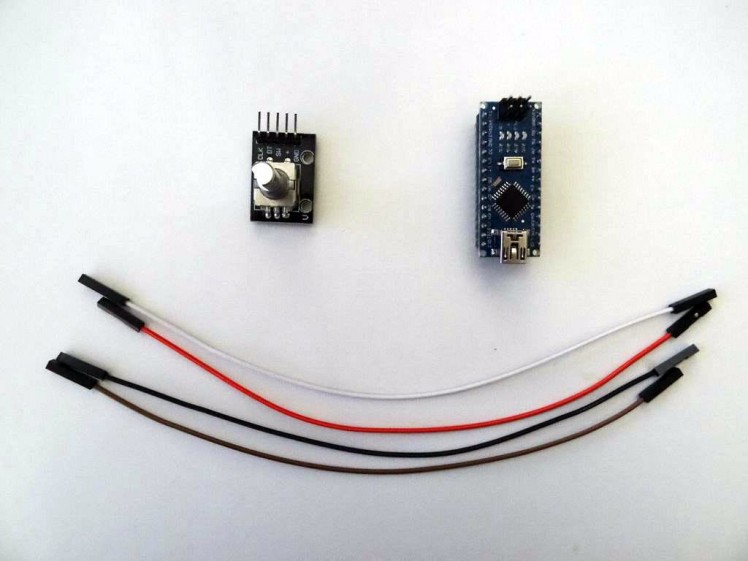
- One Arduino compatible board (I use Arduino Nano, because I have one, but any other will be just fine)
- One Rotary Encoder module I got from this cheap 37 sensors set.
- 4 Female-Female jumper wires
1 / 4 • Picture 1
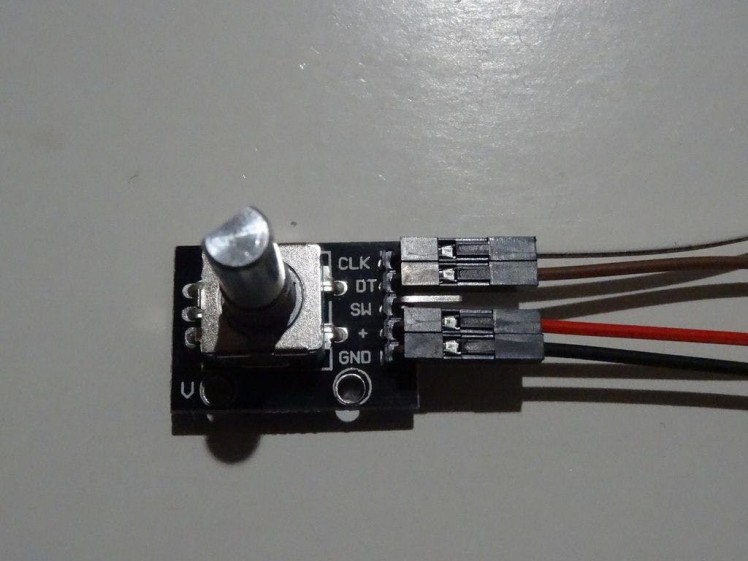
Picture 1
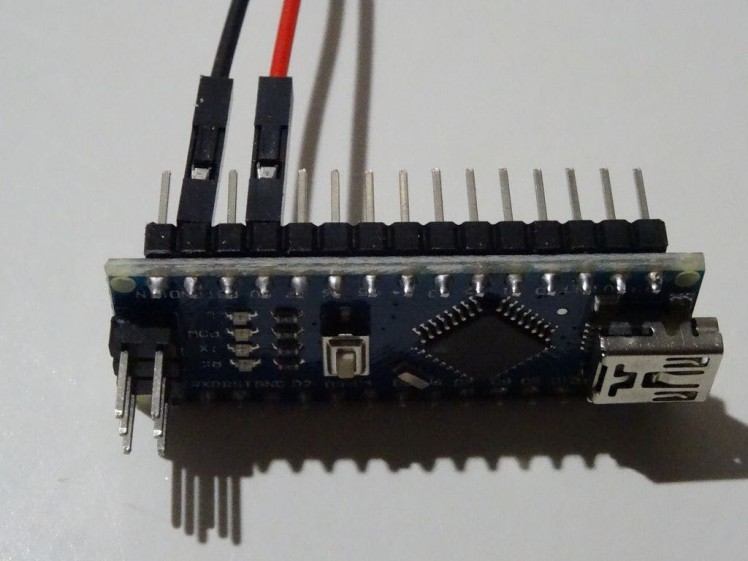
Picture 2
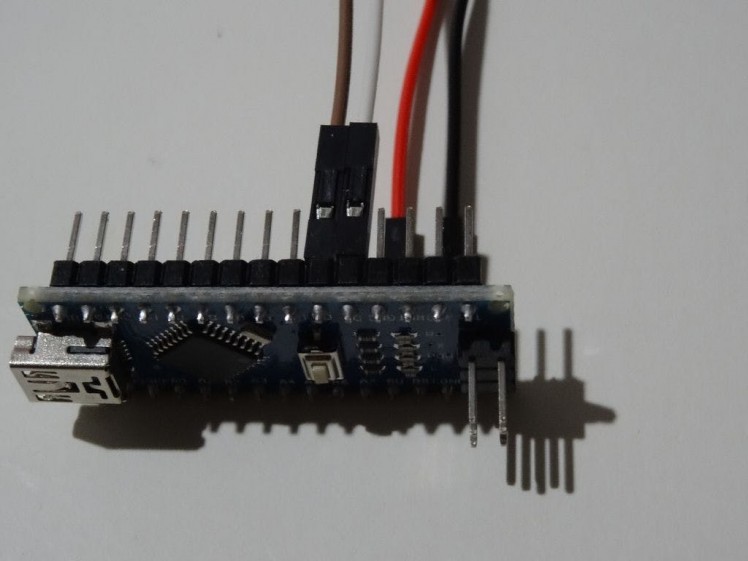
Picture 3
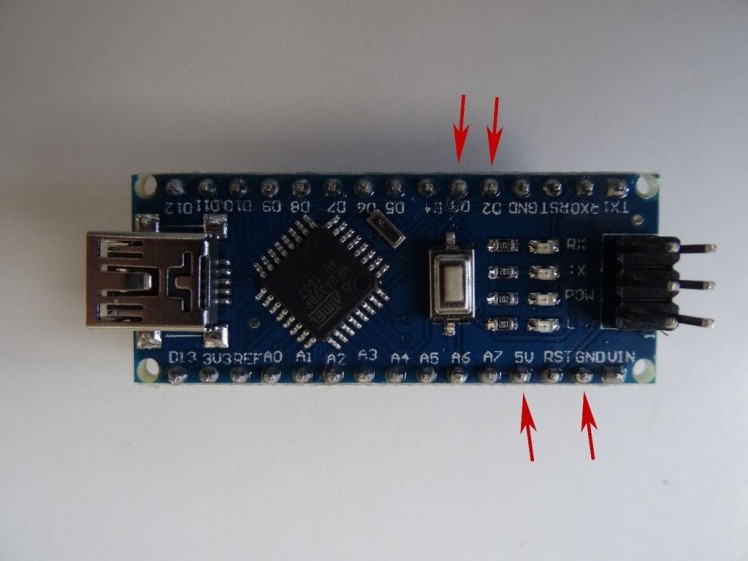
Picture 4
- Connect Ground(Black wire), Power(Red wire), Direction(Brown wire), and Clock(White wire) to the Rotary Encoder Module (Picture 1)
- Connect the other end of the Power wire(Red wire) to the 5V power pin of the Arduino board(Picture 2)
- Connect the other end of the Ground wire(Black wire) to Ground pin of the Arduino board(Picture 2)
- Connect the Clock wire(White wire) to Digital pin 2 of the Arduino board(Picture 3)
- Connect the Direction wire(Brown wire) to Digital pin 3 of the Arduino board(Picture 3)
- Picture 4 shows where are the Ground, 5V Power, Digital 2 and Digital 3 pins of the Arduino Nano.
1 / 2 • Picture 1
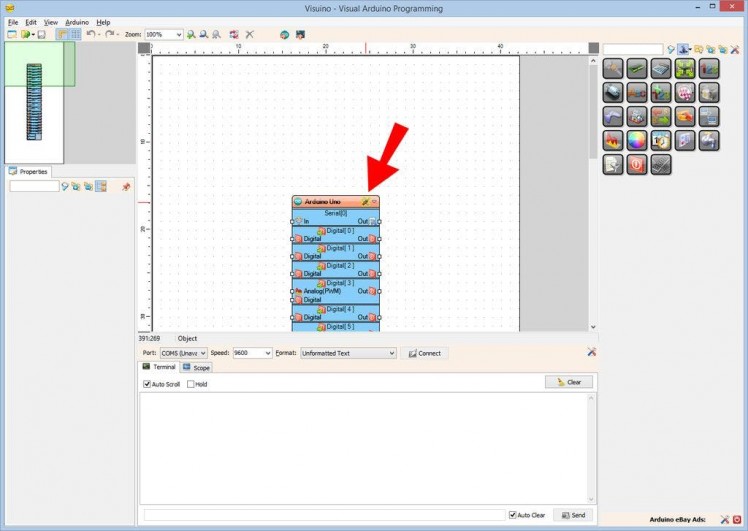
Picture 1
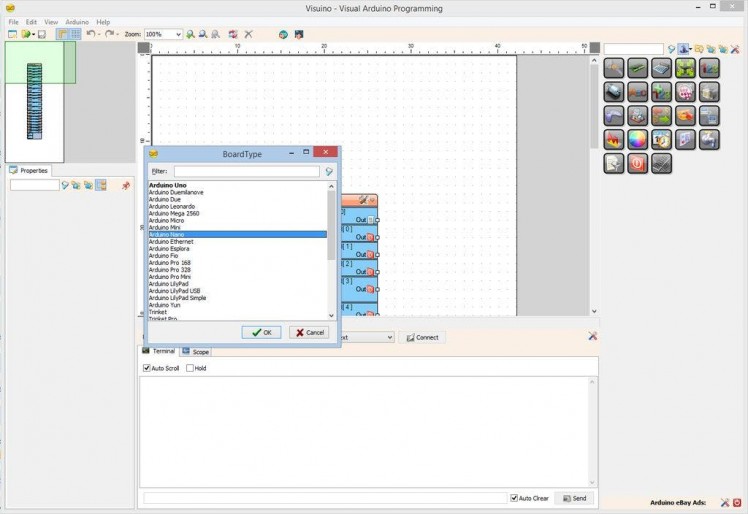
Picture 2
To start programming the Arduino, you will need to have the Arduino IDE installed from here: http://www.arduino.cc/ .
Please be aware that there are some critical bugs in Arduino IDE 1.6.6. Make sure that you install 1.6.7 or higher, otherwise this Tutorial will not work!
The Visuino: https://www.visuino.com also needs to be installed.
- Start Visuino as shown in the first picture
- Click on the "Tools" button on the Arduino component (Picture 1) in Visuino
- When the dialog appears, select Arduino Nano as shown in Picture 2
1 / 3 • Picture 1
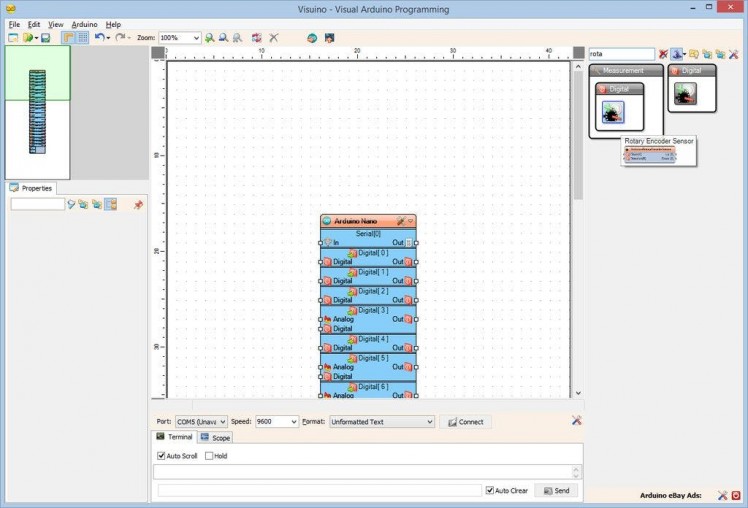
Picture 1
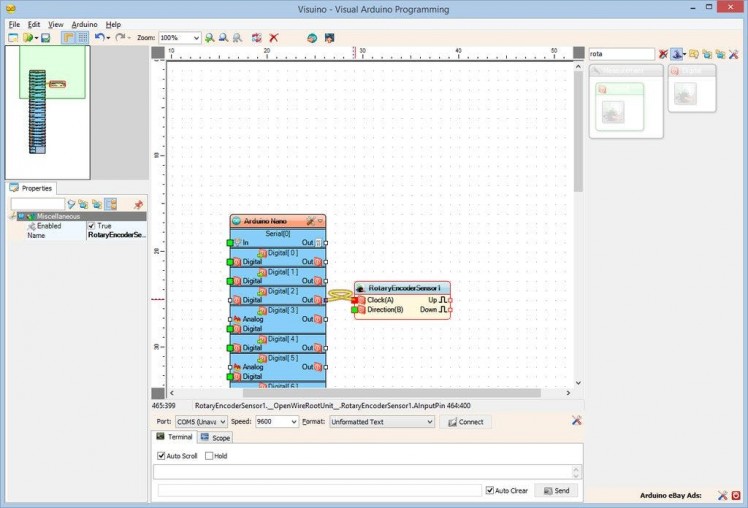
Picture 2
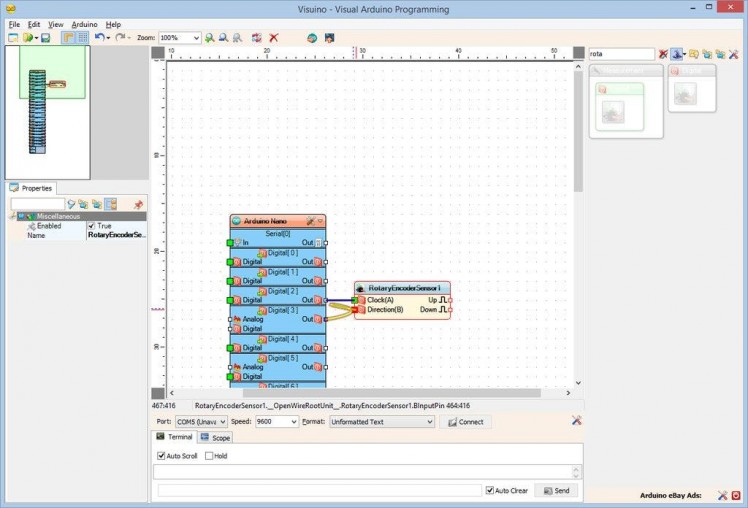
Picture 3
- Type "rota" in the Filter box of the Component Toolbox then select the "Rotary Encoder Sensor" component (Picture 1), and drop it in the design area
- Connect the "Out" pin of the Digital[ 2 ] channel of the Arduino component to the "Clock(A)" pin of the RotaryEncoderSensor1 (Picture 2)
- Connect the "Out" pin of the Digital[ 3 ] channel of the Arduino component to the "Direction(B)" pin of the RotaryEncoderSensor1 (Picture 3)
1 / 4 • Picture 1
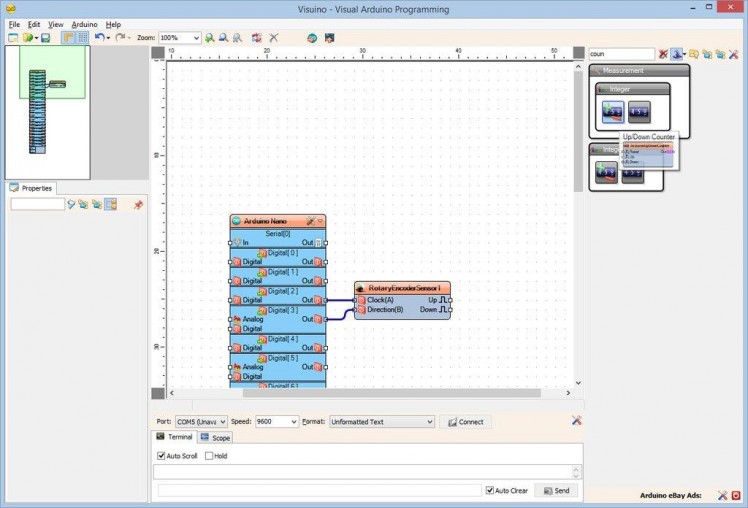
Picture 1
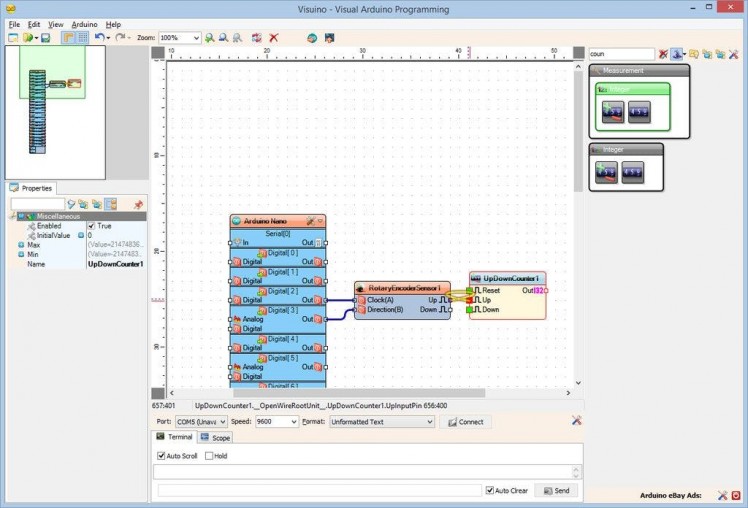
Picture 2
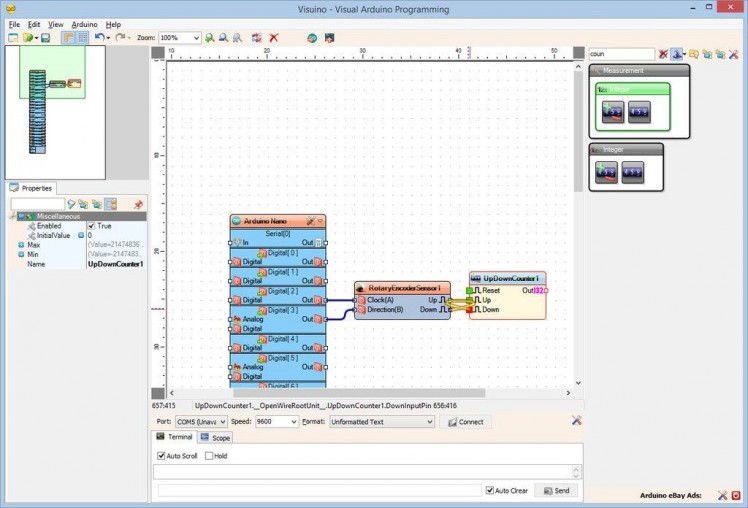
Picture 3
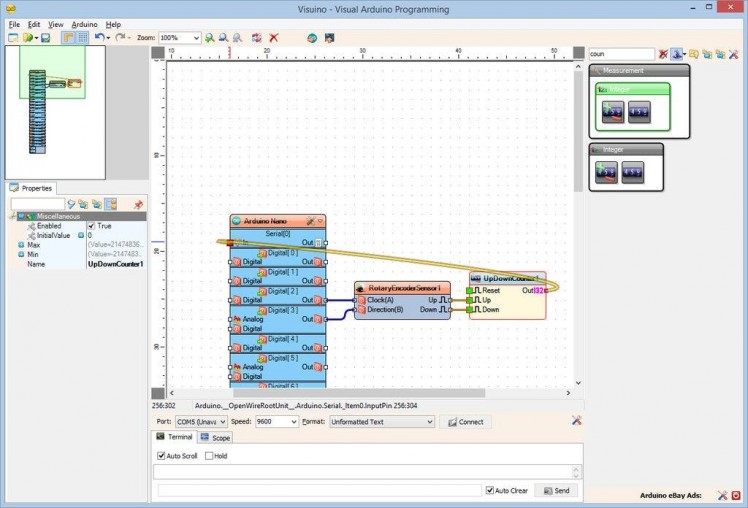
Picture 4
- Type "coun" in the Filter box of the Component Toolbox then select the "Up/Down Counter" component (Picture 1), and drop it in the design area
- Connect the "Up" pin of the RotaryEncoderSensor1 component to the "Up" pin of the UpDownCounter1 component (Picture 2)
- Connect the "Down" pin of the RotaryEncoderSensor1 component to the "Down" pin of the UpDownCounter1 component (Picture 3)
- Connect the "Out" pin of the UpDownCounter1 component to the "In" input pin of the Serial[ 0 ] channel of the Arduino component(Picture 4)
1 / 2 • Picture 1
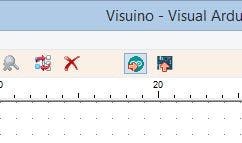
Picture 1
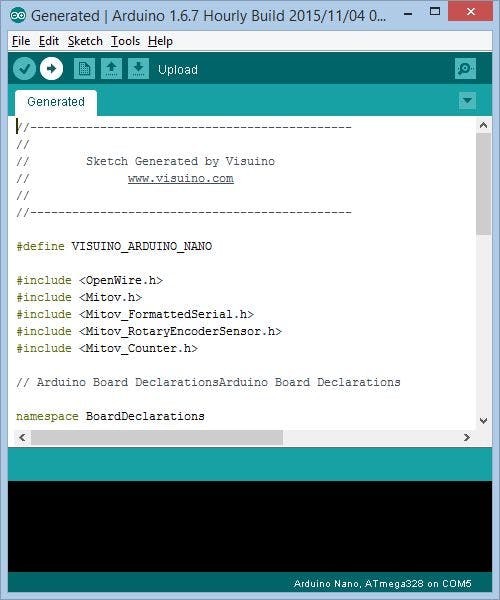
Picture 2
- In Visuino, Press F9 or click on the button shown on Picture 1 to generate the Arduino code, and open the Arduino IDE
- In the Arduino IDE, click on the Upload button, to compile and upload the code (Picture 2)
1 / 3 • Picture 1
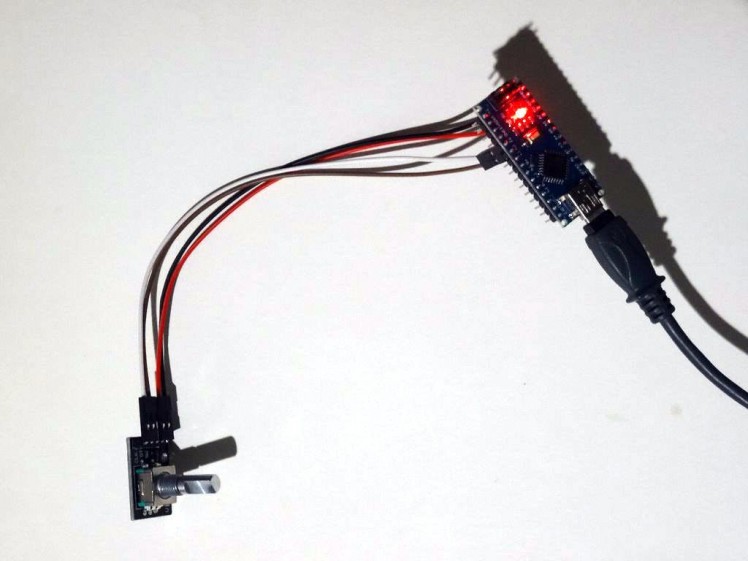
Picture 1
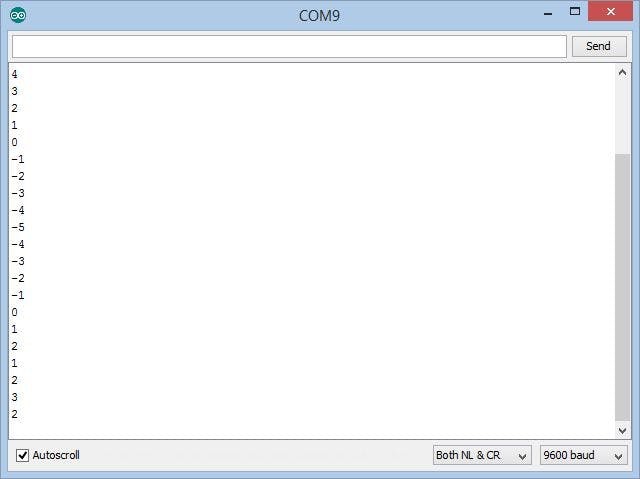
Picture 2
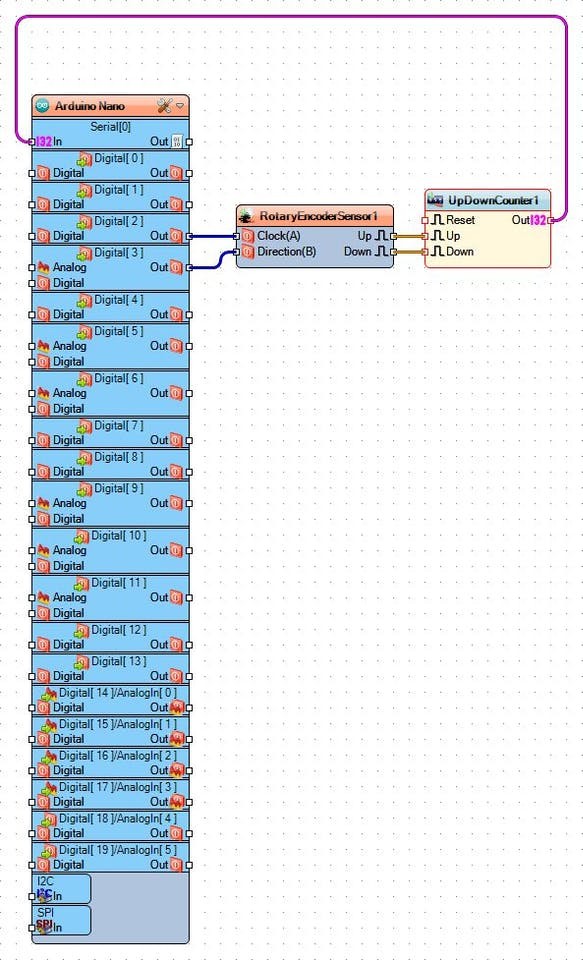
Picture 3
Picture 1 shows the completed and running project.
If you connect to the Arduino with Serial Terminal from the Arduino IDE or Visuino and then rotate the encoder back and forth, you will see in the terminal the value of the counter showing the encoder changes (Picture 2)
On Picture 3 you can see the complete Visuino diagram.
Congratulations! You have learned how to connect Rotary Encoder to Arduino, and how to read it.
Also attached is the Visuino project, that I created for this Tutorial. You can download and open it in Visuino: https://www.visuino.com































